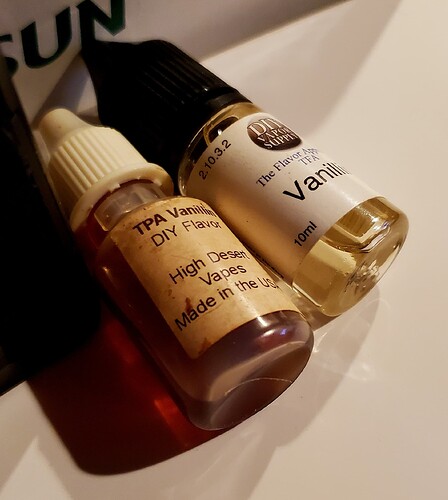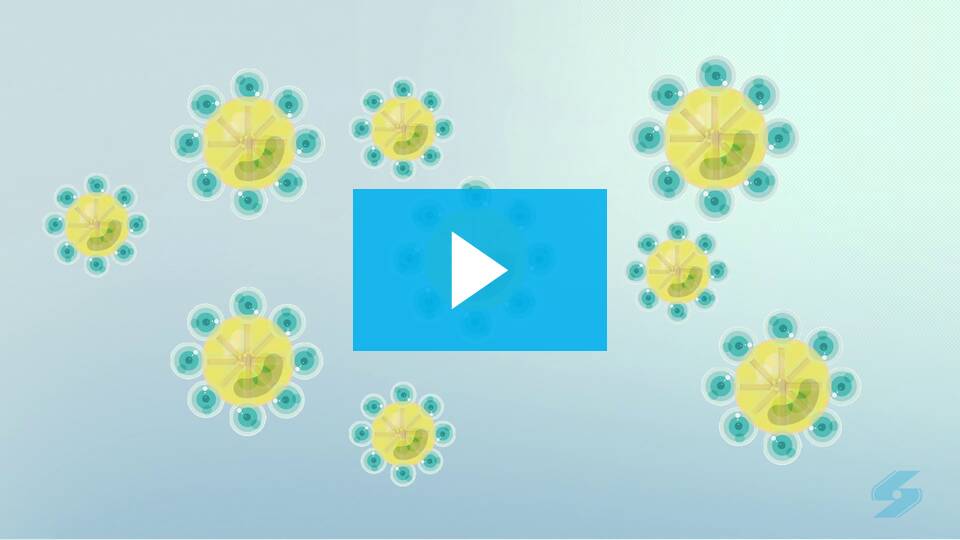I think I heard somewhere that it smells like beaver butt. ![]()
Interesting article I just read about Vanillin. Vanillin (CAS 121-33-5) — Synthetic Ingredient For Perfumery Overview — Scentspiracy
It is sensitive and prone to color change so it’s likely one of the unknowns we were discussing.
I’ll take whosever at their word. Having never smelled a beaver’s butt, I have nothing to compare it to.
And you would know this because…?
And you never will unless you court a beaver.
Thx for the info.
Its interesting to me how the subject of homogenization has dovetailed with @STR8V8PING 's quest for a specific vanilla along with @SmilingOgre 's observation of how some mixes go dark much faster, and @rcleven 's 4 year old Vanilla Custard.
In reading about the synthesis of the vanillin molecule from various chemicals and processes, the article states that the flavor of the synthesis is the same.
So In Chris’s (?) case, and I assume all others, the search is what the molecule has been combined with to produce the desired flavoring. “Madagascar” or “Holy” or “Classic” etc. for example.
Walt’s observation is spot on and like me, if I see a significant change in a mix not attributable to oxidation which I can control, my comfort level goes down and I toss the mix. In both above cases we are in the realm of the chemist/flavorist and while they are highly skilled, none are infallible or could consider all possibilities. Their creations are theirs and of course are not going to reveal their formulas.
Rc’s 4 year old mixes are a great case study. His cheesecake mix went bad while the Vanilla custard was enhanced. These mixes were left in a cabinet and went unopened and undisturbed for years. RC knew that nicotine oxidation was not what caused the darkening. As in all cases, we are not privy to the formulation. However, it seems likely to me that the darkening is caused by vanillin in the mix.
So the dovetailing with homogenization leads me to the same conclusion I’ve had nearly from the beginning: trust the flavorists to provide us with enjoyable products and leave chemistry to the chemists. A homogenizer, used properly, puts probably a thousand times the energy into mixing than the conventional shaking method. The reduction in particle or globule size (cell disruption) facilitates the before mentioned penetration and bonding of the mixed materials. Time will do this. The amount of time is speculative.
Very interesting indeed. There’s too much going on with these mixes for me to attempt to analyze the process. Light, heat, bond strengths, reactions of combinations, state of the components at any given time; over my head for sure. The permutations I perceive make me dizzy. Regardless, it’s great to be a part of this thread to read thoughts on the matter. Most everything I read in regard to scientific study ends up with something like “it appears to …”. I haven’t found much definitive on the subject.
Calculating all the chemical variables would take a room full of MIT statisticians and would probably make their heads hurt. ![]()
In the past I’ve tried to focus on the fact that VG is a thick, heavy substance that has poor properties as a solvent. Flavor concentrates are water thin suspensions of chemicals dissolved in solvents. Flavorings often separate from VG and it can take days, weeks or even months to achieve a homogeneous mixture. The time factor can be dramatically shortened by mechanical means. To me, the rest is surplusage.
There is a simple visual test to demonstrate this that does not involve the use of a high shear mixer. I will try to photograph this later today.
I’m glad you did concentrate on the thickness of VG. You changed my mixing world greatly for the better. One half hour including heating time and I have a vape ready mix. I can deal with the rare occasion when a partial mix gets dark.
The way I see this then flavours remain the flavour they were designed to be (I’ll use colour as a reference here)if red and white is mixed we get pink where as with e juice we still get red and white but our brain says we got pink.we can’t age our fluid the same as port or wine so a good mix on a molecular scale does the job add that to some Nic that’s got a bit of oxygen we’re on a winner am I close
You are correct to the extent that the molecular structures of the flavorings are not undergoing a chemical reaction or transformation. Instead they are being suspended in a solvent solution where they are bound together. They are dissolved in solvent. Sol vent …sol ution.
For our purpose this is pg and alcohol plus other agents beyond my knowledge.
This is why many recipe creators can pick out each flavor concentrate in their mixes. While its true that we will perceive the sum total of all as one because they are bound together and suspended, this is not a chemical reaction.
Maybe the best way to understand this is by looking at an emulsion. Chemicals that will mix and bond together are called miscible. Those that will not readily mix are called immiscible.
The following video demonstrates how by adding an emulsifying agent, oil and water based materials can be mixed into a stable suspension.
That makes perfect sense to me. Developing a particular type vanilla is the interesting part. One of my favorites, Tahitian Vanilla, is easy to guess because of it’s landmark cherry/almond in the background. Such a lovely vanilla when used right.
Wow. ![]() At first glance it seems that we have gone deep into the weeds from the how and why the high shear process works. But I think not. That single molecule that produces the same flavor regardless of source material demonstrates that artificial flavoring concentrates are generally not subject to chemical changes. That is, unless we do something to cause one. So using vanillin as the example, you can add your cherry/almond to the suspension and/or whatever. If chemical changes were to occur, they would be within the concentrates. Its when adding nicotine when mixing that oxidation can occur. So I add the concentrated solution to VG and leave the nic out. I don’t recall any other negative reactions.
At first glance it seems that we have gone deep into the weeds from the how and why the high shear process works. But I think not. That single molecule that produces the same flavor regardless of source material demonstrates that artificial flavoring concentrates are generally not subject to chemical changes. That is, unless we do something to cause one. So using vanillin as the example, you can add your cherry/almond to the suspension and/or whatever. If chemical changes were to occur, they would be within the concentrates. Its when adding nicotine when mixing that oxidation can occur. So I add the concentrated solution to VG and leave the nic out. I don’t recall any other negative reactions.
Anyway I’ll be interested in your results when building your own vanilla flavoring. My skills aren’t up to it. Flavor pairing definitely isn’t my talent.
I’ll be interested, too. I’ve been haunted, taunted and bewitched by vanilla. Luckily, somebody already made a good Tahitian Vanilla, Flavour Art and Flavorah. There are other brands with Tahi.Van. creams and such but the true flavor doesn’t come through as much, imo.
I could really use a homigizer *wink wink. Testing all these vanillas but they all need steep time.
Message sent
Speaking of nicotine oxidizing, have you tried the synthetic nic yet? I wouldn’t buy it because it’s too expensive but I’ve bought commercial juices that use it. It has a longer shelf life due to its molecular structure and I see no darkening of the juice. I did do some reading on one of the manufacturer’s websites and that’s what they proclaim, iirc.
No I haven’t tried it. As you know, I’ve been sidelined by health problems and haven’t paid much attention. Like a lot of people here, I saw the handwriting on the wall and stocked up. Glad I did.
I was hopeful that the synthetic nic would be a way around the “tobacco” nonsense but they shot that down with the “nicotine from any source” crap.
As far as oxidation, color change is just an indicator. Oxidized nic tastes bad and will affect your flavors. Whether they developed a way around this I have no idea.It would be great if they did but personally I doubt it. There are two basic types of oxidation. One adds an oxygen molecule, the other removes one. Both change the structure of the affected chemical.

